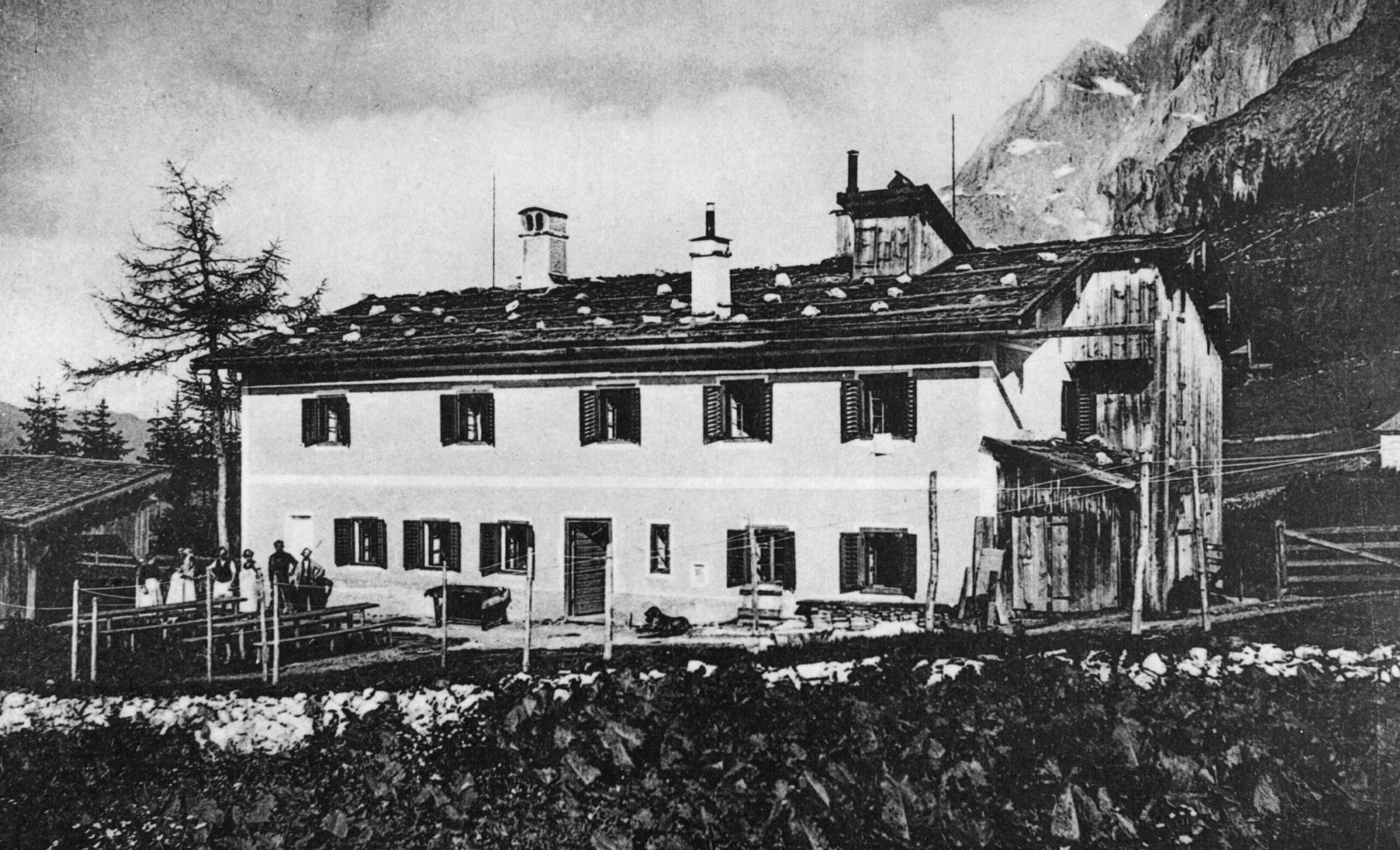Arthurhaus - an Inn and hotel with a long tradition
Inn with a long tradition
In 1852, the Arthurhaus was already
mentioned as an accommodation for
tourists. In 1866, it was converted into the
headquarters for mining, serving as a place
for miners to gather. The first celebration
of St. Barbara by the mining staff took
place in the inn under the management of
Josef Zötl and mining supervisor Johann
Pirchl. Before 1900, the "Restauration
Mitterbergalpe" was advertised as a
climatic health resort with features such
as guest rooms, good cuisine, affordable
prices, and more.
In 1921, the 'Alpenwirtschaft Mitterberg‘
underwent another renovation. A second
floor, constructed in wood, with expanded
attic rooms, was added above the existing
masonry first floor.
This renovation was commissioned by the then-major shareholder of Mitterberger Kupfer AG, the
industrialist Arthur Krupp. Since then, the
establishment has been known in honor of
Arthur Krupp as the "Arthurhaus."
As a consequence of the global economic
crisis following the collapse of the
Austrian major bank 'Creditanstalt‘ in
1931, the Mitterberger Kupferbergbau AG
was liquidated. The then-tenant Peter
Radacher (the First, 1896-1976) purchased
the Arthurhaus and the properties on
the Mitterberg. Since 1885, the Radacher
family has been operating the Arthurhaus
mountain hotel with a strong connection
to nature.
Kids
What is a geopark?
A geopark is a special region with extraordinary landscapes. It is a place where you can see, experience and touch the history of the earth. A geopark is also a place to learn, whether in museums or show mines or on the hiking trail, you can always experience and discover new things.
Hüttau, Bischfshofen, Mühlbach am Hochkönig and also St. Veit im Pongau are part of the UNESCO Global Geopark Alps, perhaps you also live in a place that is part of the Geopark?
The Ore of the Alps UNESCO Global Geopark includes three museums and three show mines. In Hüttau, you can see many sparkling crystals and gold in the museum and hike deep into the mountain in the show mine to experience how copper was mined in the past. In Mühlbach there is the Mining Museum and the Johannastollen with many exciting stations to find out what equipment and tools were used in mining. In the Seelacken Museum in St.Veit im Pongau, you can relive the life of farmers in the past and immerse yourself in 4,000 years of mining history in the Sunnpau show mine. In the visitor centre in Bischofshofen there is an exhibition with lots of rocks and information about the entire Geopark.
What is a geopark?
A geopark is an exceptional geological region that is particularly interesting and exciting. If a region wants to become a Geopark, it is strictly scrutinised and reviewed every four years to ensure that all requirements are met. There are currently 229 UNESCO Global Geoparks around the world.
Geoparks are places to learn, you can learn a lot of new things about the history of a region, geology and geological history and, here in our region, about mining. Lectures and workshops with experts are also regularly held in the Geopark.
The towns of Hüttau, Bischofshofen, Mühlbach am Hochkönig and St. Veit im Pongau belong to the Ore of the Alps UNESCO Global Geopark. The Geopark is also home to three show mines and three museums that tell the mining history of the Pongau region. These are the Larzenbach copper mine and the "Ore, Gold and Minerals" museum in Hüttau, the Johanna Stollen and the Begbau Museum in Mühlbach am Hochkönig and the Sunnpau show mine and the Seelacken Museum in St. Veit im Pongau. The visitor centre in Bischofshofen presents exhibits from all Geopark communities and provides an overview of the Geopark.
What is a geopark?
A geopark is an area with geological features that is defined by boundaries. The aim of a geopark is to preserve nature for future generations and to combine this protection with sustainable tourism. There are currently 229 geoparks in 50 countries around the world.
Geoparks also have the task of raising awareness about the history of the earth, the landscape and geological processes and linking these with the cultural history of the region. This can be done on hiking trails with the geosites, with lectures and workshops by experts or with a visit to a museum or show tunnel.
To become a UNESCO Global Geopark, a region must undergo a rigorous assessment. If this assessment is positive, the "UNESCO Global Geopark" designation is awarded to the region for four years. A revalidation takes place every four years to ensure that all requirements continue to be met.
The towns of Hüttau, Bischofshofen, Mühlbach am Hochkönig and St. Veit im Pongau belong to the Ore of the Alps UNESCO Global Geopark. The Geopark is also home to three show mines and three museums that tell the mining history of the Pongau region. These are the Larzenbach copper mine and the "Ore, Gold and Minerals" museum in Hüttau, the Johanna Stollen and the Begbau Museum in Mühlbach am Hochkönig and the Sunnpau show mine and the Seelacken Museum in St. Veit im Pongau. The visitor centre in Bischofshofen presents exhibits from all Geopark communities and provides an overview of the Geopark.


